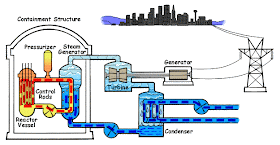Learn Mathematics Tips/ How to Learn Mathematics
1. Always read math problems completely before beginning any calculations. If you "glance" too quickly at a problem, you may misunderstand what really needs to be done to complete the problem.
2. Whenever possible, draw a diagram. Even though you may be able to visualize the situation mentally, a hand drawn diagram will allow you to label the picture, to add auxiliary lines, and to view the situation from different perspectives.
3.Know your calculator! If you must borrow a calculator from your teacher, be sure that you have used that "brand" of calculator on previous occasions. If you are not familiar with how a particular calculator works, your calculations may be incorrect.
4.If you know that your answer to a question is incorrect, and you cannot find your mistake, start over on a clean piece of paper. Oftentimes when you try to correct a problem, you continually overlook the mistake. Starting over on a clean piece of paper will let you focus on the question, not on trying to find the error.
5.Do not feel that you must use every number in a problem when doing your calculations. Some mathematics problems have "extra" information. These questions are testing your ability to recognize the needed information, as well as your mathematical skills.
6.Be sure that you are working in the same units of measure when performing calculations. If a problem involves inches, feet AND yards, be sure to make the appropriate conversions so that all of your values are in the same unit of measure (for example, change all values to feet).
7.Be sure that your answer "makes sense" (or is logical). For example, if a question asks you to find the number of feet in a drawing and your answer comes out to be a negative number, know that this answer is incorrect. (Distance is a positive concept - we cannot measure negative feet.)
8.Remember, that it may be necessary to "solve" for additional information in a problem before being able to arrive at the final answer. These questions are called "two-step" problems and are testing your ability to recognize what information is needed to arrive at an answer.
9.If time permits, go back and resolve the more difficult problems on the test on a separate piece of paper. If these "new" answers are the same as your previous answers, chances are good that your solution is correct.
10.Remain confident! Do not get flustered! Focus on what you DO know, not on what you do not know. You know a LOT of math!!
11.When asked to "show work" or "justify your answer", don't be lazy. Write down EVERYTHING about the problem, including the work you did on your calculator. Include diagrams, calculations, equations, and explanations written in complete sentences. Now is the time to "show off" what you really can do with this problem.
12.If you are "stuck" on a particular problem, go on with the rest of the test. Oftentimes, while solving a new problem, you will get an idea as to how to attack that difficult problem.
13.If you simply cannot determine the answer to a question, make a guess. Think about the problem and the information you know to be true. Make a guess that will be logical based upon the conditions of the problem.
14.In certain problems, you may be able to "guess" at an approximate (or reasonable) answer. After you perform your calculations, see if your final answer is close to your guess.
Here are some "how-to's" that will come in handy.



































